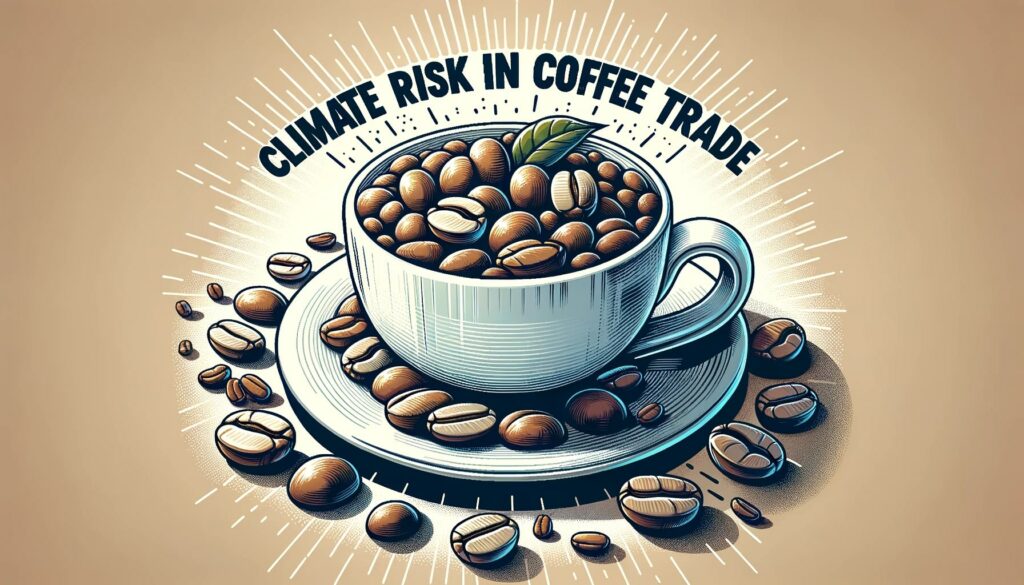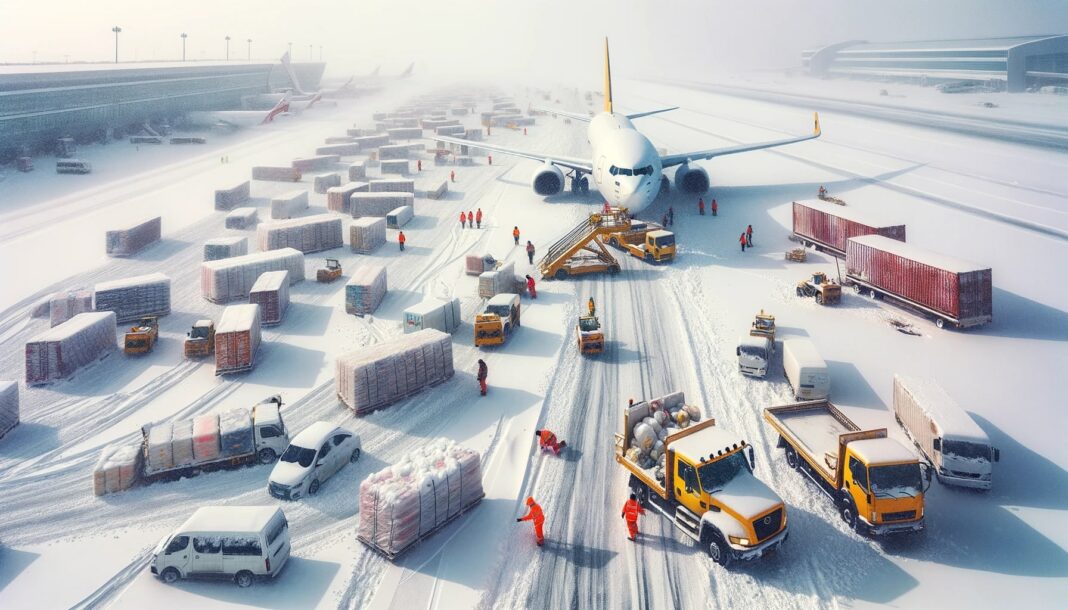“Global warming is altering what we expect as climate, and natural disasters like drought are the weather we get,” Mark Twain could have said today, underscoring the need for adaptations.
Today, the unexpected weather patterns driven by climate change, such as natural disasters and drought, are throwing curveballs at global supply chains, trade routes, and power grids. The impacts of climate risks and hazards are real and growing, with potential disruptions from natural disasters and vulnerabilities posing a threat that can no longer be ignored.
Supply chain managers are grappling with the impacts of climate risks – from transport hiccups to rising costs, and suppliers facing climate hazards. This post provides an overview of climate hazards and the pressing issue of global warming, paving the way for a deeper dive into specific impacts like sea level rise and strategies for adaptation to physical climate risk.
Climate Science and Global Supply Chain Implications
Climate change is throwing punches at global supply chains. Global warming is causing chaos in the supply chain, messing with raw material availability due to disasters, and shaking up energy markets, revealing its impacts.
Weather Disruptions in Logistics
Climate risks are no joke. Extreme weather events, fueled by global warming, are on the rise, posing a climate risk and playing havoc with the supply chain and logistics due to disasters. Imagine a hurricane hits a major port – bam! Goods can’t be shipped out. A snowstorm blankets an airport – boom! Cargo planes are grounded.
For example, the hazard of Hurricane Sandy caused around $50 billion in damages, which was a significant percent of the total damage from sea level related disasters in 2012. Many food businesses couldn’t operate for weeks due to disrupted trade and risk in the supply chain.
Agricultural Patterns and Raw Material Availability
Next up: changes in agricultural patterns. Climate change isn’t just heightening trade risk by making it hot outside; it’s also shifting the supply chain, altering where crops, for example, can grow. This messes with the supply chain and trade of raw materials big time, introducing significant risk.
Take coffee as an example. Warming temperatures have led to increased pest activity and disease outbreaks among coffee plants worldwide, posing a risk to global coffee trade. Trade issues and risk factors mean fewer beans, resulting in higher prices and a limited supply for your morning cup of joe.

Shifting Energy Markets
Lastly, let’s touch on energy markets. As we grapple with climate change, there’s been a major shift towards renewable sources of energy like wind and solar power.
This move has implications for supply chains too. Traditional oil-based industries may find themselves struggling as demand decreases while green tech companies could see a surge.
Adaptation Strategies Amidst Climate Changes
Risk Management for Resilient Supply Chains
Climate change is no joke, folks. It’s a real boogeyman messing with our global supply chains big time. We need to buck up and put some solid risk management plans into action.
-
Think about it like playing chess against Mother Nature: we need to anticipate her moves (climate hazards) and have counter-moves ready (contingency plans).
Role of Engineers in Combating Disruptions
Building Resilient Infrastructure
Engineers are the frontline soldiers in this war against climate change. They’re designing robust infrastructures that can withstand extreme weather events.
For instance, they’re creating buildings that can resist high winds and floods. This resilience reduces the disruptions to global supply chains caused by these extreme events.
Engineering Efficient Energy Use
Another way engineers are making a difference is through energy efficiency. They’re finding ways to use less energy in supply chain operations.
Think about it like tuning up your car for better gas mileage. By optimizing systems and processes, engineers help companies reduce their carbon footprint and save money at the same time.
Innovations for Climate Adaptation
Last but not least, engineers are developing innovative technologies for climate adaptation. These solutions help businesses adapt to changing conditions and keep their supply chains running smoothly.
Imagine having an umbrella that automatically opens when it starts raining. That’s what these technologies do – they anticipate changes in the climate and respond accordingly to minimize disruption.
Sea Levels Rise Impacting Supply Chain Infrastructure
Coastal Infrastructure at Risk
Sea level rise is no joke. It’s a real threat to our coastal infrastructure like ports and warehouses. Think about it, these physical assets are crucial cogs in the global supply chain machine.
-
Ports? They’re the gateways for international trade.
-
Warehouses? They’re the storage hubs for goods.
But as sea levels creep up, they’re getting hammered. Flooding becomes more common, damaging these vital facilities.
Transportation Routes Take a Hit
And it’s not just about buildings. Our transportation routes are also on the line. As flooding and erosion increase due to rising sea levels, roads and railways get wiped out.
Imagine this scenario: Your shipment is ready to roll but boom! The road’s gone or there’s water everywhere. That’s a major hitch in your operations!
Redesign or Relocation: The New Normal?
So what can we do? We need to rethink our strategies. Infrastructural redesign or relocation might be our only options left.
For instance:
-
Building higher warehouses to avoid flood damage.
-
Shifting ports further inland where they’re less exposed.
These aren’t easy tasks, but hey, climate change isn’t going to wait for us!
Semiconductors’ Increased Vulnerability to Hurricane Risks
Hurricanes Disrupting Semiconductor Production
Global supply chains are taking a hit, and the semiconductor industry is no exception. Picture this: a major hurricane sweeps through, causing power outages and halting production.
Impact of Power Outages on Manufacturing Facilities
These power outages aren’t just an inconvenience; they’re a full-blown disaster for semiconductor manufacturing facilities. Without electricity, these factories come to a standstill.
-
Case in point: In 2018, Taiwan’s semiconductor sector faced severe disruptions due to Typhoon Maria.
Semiconductor production isn’t something you can simply switch back on once the lights come back. The process is delicate and requires constant power supply.
Contingency Plans Against Hurricane Threats
So what’s being done about it? The semiconductor industry is not sitting idle.
-
They’re increasing their hazard exposure analysis.
-
They’re implementing risk mitigation strategies.
-
They’re exploring alternative sources of rare earths.
But let’s be real here; these contingencies are just band-aids for the bigger issue at hand – climate change.
The ripple effects of these extreme weather events go beyond just one sector. The probability of such disasters increases with each passing year due to our changing climate.
Energy Market Shifts in Net Zero Transition
Renewable Energy Impact on Supply Chains
The shift towards renewable energy has a big impact on supply chains. Industries that rely heavily on energy are feeling the heat.
-
For instance, manufacturing companies have to rethink their operations.
-
They’ve got to adapt to new power grids powered by renewables.
This ain’t easy folks. It’s like trying to change the wheels of a moving car!
Cost Implications of the Shift
Switching from fossil fuels to renewables is costly for supply chains. Economic activity takes a hit initially.
-
Imagine having to replace all your old, gas-guzzling trucks with electric ones.
-
That’s some serious dough you’d have to shell out.
But it’s not all doom and gloom! There’s a silver lining here too.
Opportunities in Green Energy Markets
Supply chains can find opportunities in this green energy market transition. We’re talking about big bucks here!
-
A recent study showed that renewable energy could boost global GDP by 1 percent.
-
That’s like adding an entire Australian economy into the mix every year!
So yeah, it might be tough at first, but going green can actually put more green in your pocket!
Future Supply Chains in a Warming World
Our planet is getting warmer and it’s shaking up the way we do business. From rising sea levels threatening our infrastructure to hurricanes putting semiconductors at risk, climate change is no longer a distant concern—it’s here, disrupting supply chains across the globe. But hey, don’t sweat it! We have strategies to adapt and engineers are stepping up their game to combat these disruptions. Plus, energy markets are shifting gears in this net zero transition.
You’re part of this too. We all are. Now’s the time to get savvy about how climate change impacts your business and what you can do about it. So roll up your sleeves, dive into the science and join us in building resilient supply chains for a warming world. Ready for action? Let’s turn risks into opportunities!
FAQ 1: How does rising sea level impact global supply chains?
Rising sea levels can disrupt port operations, damage infrastructure and increase transportation costs due to rerouting or delays. This could potentially lead to increased prices for consumers and losses for businesses.
FAQ 2: Why are semiconductors vulnerable to hurricane risks?
Semiconductors factories often require specific environmental conditions to operate effectively. Hurricanes can cause power outages or flooding that disrupts production, leading to shortages in the market.
FAQ 3: What role do engineers play in combating supply chain disruptions due to climate change?
Engineers can design more resilient infrastructure that withstands extreme weather events or develop innovative solutions such as renewable energy technologies that reduce carbon emissions.
FAQ 4: How does transitioning towards net zero impact energy markets?
The shift towards net zero means moving away from fossil fuels towards renewable energy sources like solar or wind power which may result in new market opportunities but also challenges such as grid reliability.
FAQ 5: What adaptation strategies exist for businesses facing climate change related disruptions?
Businesses can adopt strategies such as diversifying their supply sources, investing in climate resilient infrastructure or integrating climate risk management into their business strategy.
FAQ 6: How does understanding climate science help businesses?
Understanding the implications of climate change helps businesses anticipate potential risks and develop strategies to mitigate them. This could lead to a competitive advantage in a changing market landscape.
